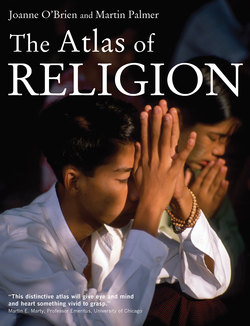Читать книгу The Atlas of Religion - Joanne O'Brien - Страница 18
На сайте Литреса книга снята с продажи.
ОглавлениеThe different traditions within one religion owe their creation to many different factors. In the process of expanding beyond its original heartland, a religion can take on the beliefs of another culture – as happened when Buddhism moved from India through China to Japan. Political divisions may exacerbate theological differences and help to create alternative traditions – as occurred when the demise of the Roman Empire split the Christian Church in two: the Eastern Orthodox Church, based in Constantinople, and the Western Catholic Church, based in Rome. Divisions often arise when a religious structure claims to be authoritative – as happened when the Protestants broke from the domination of Rome. Faiths with a more fluid organizational structure, such as Hinduism, tend
have fewer splits because there is no single defining authority to be challenged. Chinese religion is a vast catchbag of traditions, schools, temples and ways of life with no overarching authority, leaving almost every temple to develop its own distinctive traditions. Religious traditions may be created to support a national identity within a universal tradition. Such is the case with Anglicanism within Christianity. However, Anglicanism then created a universal tradition through the British Empire, and this is now splitting into new traditions as cultural factors, particularly in African traditions, challenge the earlier Anglo-American traditions.
